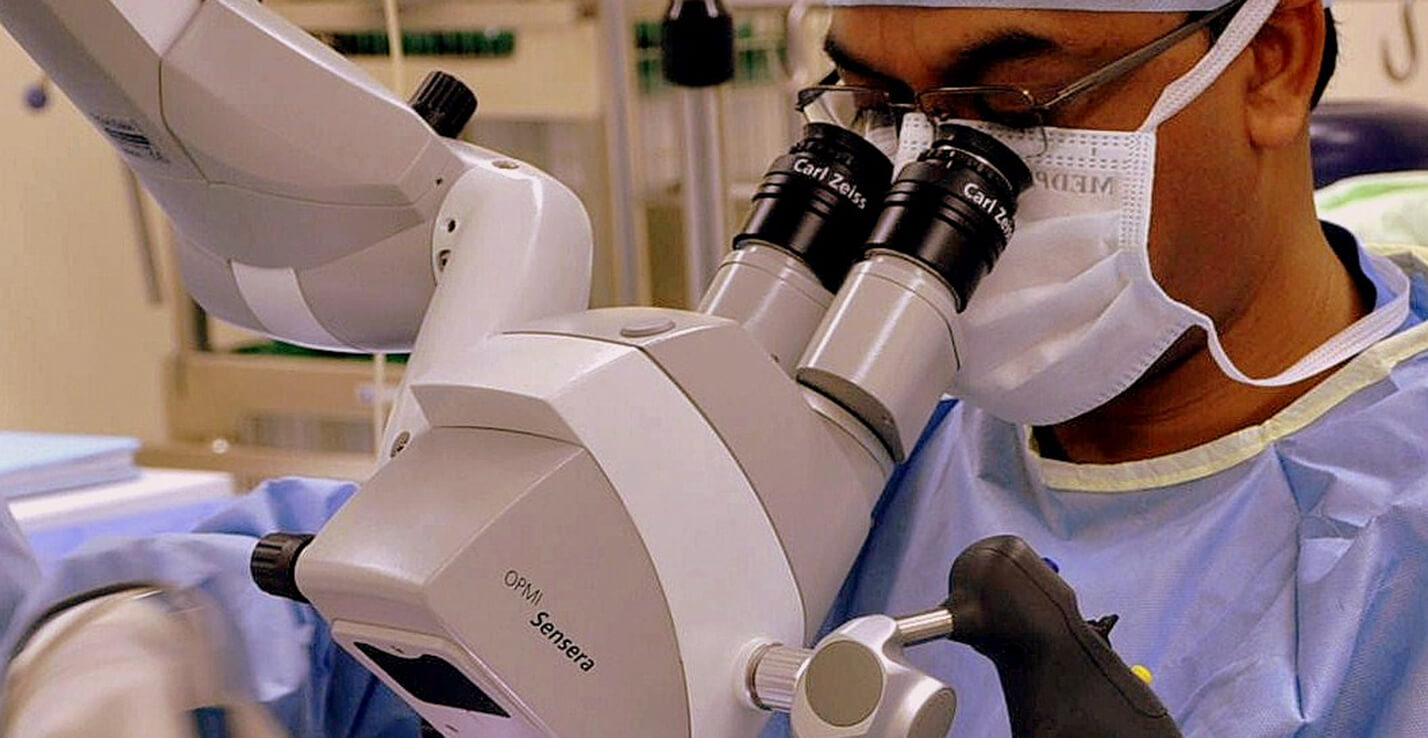MICROSCOPIC EXAMINATION OF THE EAR/ SUCTION CLEARANCE OF THE EAR
A high powered binocular operating microscope, very fine delicate instruments and a miniature vacuum cleaner (microsuction apparatus) is used to examine the External Auditory Canal and ear drum. Ear toilet, suction clearance etc can be performed as an out-patient procedure. Microscopic suction clearance is performed to
- Diagnose the problem in the ear. This is possible because of bright illumination, binocular and stereoscopic and high power magnification provided by the microscope.
- Remove foreign bodies or any other material like impacted wax, fungus or dead and dry layers of skin.
Know about the procedure
- You may be asked to instill wax softening ear drops in the ear 3 to 4 times a day for 2 to 3 days before undergoing the procedure.
- During the procedure you will hear lot of noise produced by the suction tip. It may sometimes be painful and may occasionally cause dizziness lasting for few minutes.
- You will be asked to lie down for few minutes if you feel dizzy but will be able to drive back home once you are free of dizziness.
- At times it may be necessary to perform this procedure under general anaesthesia, especially in young children as a day care procedure.
ENDOSCOPIC EXAMINATION OF THE NOSE AND SINUSES (RIGID ENDOSCOPY WITH HOPKIN’S RODS)
Hopkin’s rigid endoscopes, 4mm in diameter are used in conjunction with microsuction and fine instruments to examine the nasal cavity and opening area of the sinuses which helps in accurate diagnosis of nasal, sinus and nasopharyngeal diseases.
- This is possible because of bright illumination, magnified view of the narrow openings, and looking around the corners provided by the different angled Hopkin’s rod lenses in the scope.
- Treatment carried out during endoscopy are endoscopic clearance of blood clots, crusts and mucus in the immediate post operative period, cauterization of small nosebleeds etc. Know about the procedure
KNOW ABOUT THE PROCEDURE
- You will receive a local anaesthetic spray into your nose which will taste bitter and you may feel suffocation for few minutes which is due to the action of the drug and there’s nothing to be alarmed.
- You will be asked to lie still in the couch while the endoscope passes through the nose gently. During this time you have to breathe through the mouth.
- You have to lie down for a few minutes after the procedure. You should not eat or drink till the local anaesthetic effect disappears, usually 1 to 2 hours.
- You can drive home after one hour after the procedure.
FLEXIBLE FIBREOPTIC NASOLARYNGOSCOPY (FOL)
A transnasal flexible laryngoscope is used for office-based diagnosis of nasal, nasopharyngeal, oropharyngeal and laryngeal diseases. This office exam is extremely well tolerated and often performed multiple times per day to patients of all ages. This can even be performed on newborns with the aforesaid problems.
Reasons for performing this procedure during your visit to the clinic include hoarseness of voice, suspected vocal cord lesions, persistent shortness of breath, difficulty or inability to swallow, longstanding history of smoking, and inability to visualize the vocal cords during the examination.
Know about the procedure
- You will receive a local anaesthetic spray into your nose and throat which will taste bitter and you may feel suffocation for few minutes which is due to the action of the drug and there’s nothing to be alarmed.
- You are then asked to sit in an upright position and the scope is passed along the floor of the nose into the back of the throat to a level just above the vocal cords. At this point you are asked to breathe deeply and phonate, allowing the physician to directly observe the structure and dynamic motion of the true and false vocal cords.
- There are no lasting side effects to this procedure and the anesthetic spray wears off over a period of 1 to 2 hours.
- You can drive home after one hour after the procedure.
